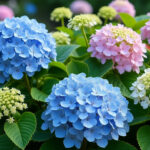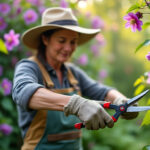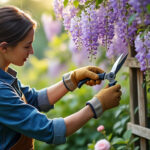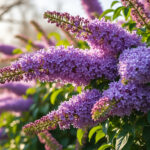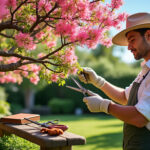Understanding how to prune hydrangeas effectively is crucial for gardeners who wish to achieve vibrant blooms and healthy plants. This guide covers the seasonal practices that ensure hydrangeas thrive, detailing the specific techniques tailored to different varieties. By following these methods, gardeners can elevate their landscapes, creating a stunning display of color and texture that brings joy throughout the seasons.
Seasonal Overview of Hydrangea Pruning
Hydrangeas are remarkable for their floral displays, which vary significantly depending on the species. The need for pruning arises from the requirement to stimulate growth, maintain shape, and promote abundant blossoming. Various hydrangeas bloom either on old wood or new wood, making it essential to know when and how to prune specific types. This seasonal guide will help clarify the best practices throughout the year.
The Importance of Knowing Your Hydrangea Type
Different hydrangea species have varied flowering habits, resulting from their growth patterns. Before proceeding with any pruning, identifying whether the hydrangea blooms on old or new wood is necessary. This distinction informs when to prune without sacrificing potential blooms for the following season.
- Old Wood Bloomers:
- Bigleaf hydrangeas (Hydrangea macrophylla)
- Oakleaf hydrangeas (Hydrangea quercifolia)
- Mountain hydrangeas (Hydrangea serrata)
- Climbing hydrangeas (Hydrangea petiolaris)
- Bigleaf hydrangeas (Hydrangea macrophylla)
- Oakleaf hydrangeas (Hydrangea quercifolia)
- Mountain hydrangeas (Hydrangea serrata)
- Climbing hydrangeas (Hydrangea petiolaris)
- New Wood Bloomers:
- Panicle hydrangeas (Hydrangea paniculata)
- Smooth hydrangeas (Hydrangea arborescens)
- Panicle hydrangeas (Hydrangea paniculata)
- Smooth hydrangeas (Hydrangea arborescens)
Understanding the basic characteristics of these distinctions helps to ensure that each cut made contributes positively to the health and aesthetics of the plants. Each species benefits from different pruning times and methods, reflecting their unique growth cycles.
| Hydrangea Type | When to Prune | Wood Type |
|---|---|---|
| Bigleaf | After flowering (summer) | Old growth |
| Oakleaf | After flowering (summer) | Old growth |
| Panicle | Late winter/early spring | New growth |
| Smooth | Late winter/early spring | New growth |
Pruning in Different Seasons
Recognizing the appropriate times to prune these magnificent plants can make all the difference in ensuring they produce beautiful blooms year after year. Each season offers unique challenges and opportunities for caring for hydrangeas.
Spring: The Season of Renewal
Late winter to early spring is the optimal time for pruning new wood bloomers like panicle and smooth hydrangeas. Notably, during this period, the plant is still dormant, allowing for healthy pruning without risking the buds for the forthcoming flowering season.
- Remove dead or damaged branches.
- Thinning out dense sections helps improve air circulation.
- Cut back main stems to 18-24 inches from the ground to encourage bushier growth.
This practice not only sets the stage for abundant blooms in summer but also fosters a stronger structure for the plant overall. Ensuring that no dead wood remains also aids in reducing diseases that can affect growth.
Summer: Maintenance Month
Summer is characterized more by maintenance and shaping than by heavy pruning. This is a time to focus on deadheading spent blooms from all varieties. By removing faded flowers, gardeners encourage secondary blooming and maintain the visual appeal of the plants.
- Deadhead spent blooms.
- Trim any overgrown branches for shape maintenance.
- For old wood bloomers, any pruning should happen immediately after flowering.
Regular attention during the summer months prevents excessive growth and encourages a healthy hydrangea that can thrive in the fall.
Fall: Preparing for Dormancy
As fall approaches, it’s essential to approach pruning with caution. Major pruning works should generally be avoided at this stage, especially for old wood bloomers since they are setting buds for the next season.
- Continue deadheading and removing any dead or damaged wood.
- Limit significant cuts; light trimming is acceptable for new wood bloomers.
This practice ensures that plants conserve energy as they enter dormancy while preparing for the successful growth of new blossoms in the following year.
Winter Care
Winter care does not involve active pruning but demands essential steps for protecting the plants. Leaving dried blooms intact can provide protection for developing buds against frost. In regions experiencing severe weather, consider wrapping the plants or applying mulch as added insulation.
- Leave dried blooms on the plant for protection.
- Mulch around the base to insulate roots.
- Wrap shrubs in burlap for extra protection in extreme climates.
This deliberate care ensures that hydrangeas remain nourished and protected, resulting in a healthy resurgence once spring arrives.
Tools and Techniques for Pruning Hydrangeas
The tools used in pruning hydrangeas significantly influence both the process and the outcome. Utilizing the right equipment is essential for ensuring clean cuts and reducing stress on the plants. Proper techniques also ensure that plants recover quickly and flourish after the pruning process.
Choosing the Right Tools
Investing in high-quality gardening tools significantly impacts the effectiveness of pruning tasks. The following tools are recommended for optimal results:
- Pruning Shears: Ideal for smaller branches.
- Loppers: Useful for moderate-sized stems.
- Hedge Shears: Favorable when trimming larger shrubbery.
Before starting the pruning session, ensure that all tools are clean and sharp to avoid spreading diseases among the plants. Sanitizing tools can create a healthier garden environment overall.
| Tool Type | Best Use | Care Tips |
|---|---|---|
| Pruning Shears | Small branches | Keep blades clean and sharp |
| Loppers | Moderate branches | Sanitize between plants |
| Hedge Shears | Larger shrubs | Store in dry place |
Pruning Techniques to Promote Healthy Growth
Employing the proper techniques during pruning is crucial for healthy plant growth. Follow these practices:
- Make Clean Cuts: Always cut just above a leaf node at a slight angle to promote new growth.
- Remove Weak Growth: Focus on thinning out weak branches to allow stronger growth to thrive.
- Assess as You Go: Regularly step back to evaluate the shape and fullness of the plant.
Engaging in these practices sets hydrangeas on a path toward expansive blooms, ensuring that their beauty enhances any garden. Additionally, maintaining a visually appealing shape ensures that the plants remain balanced and healthy.
Common Mistakes to Avoid While Pruning
Pruning, although vital for the health of hydrangeas, poses risks if not performed correctly. Some common mistakes can lead to reduced bloom production or even harm the plants. Awareness of these pitfalls can aid in better gardening practices.
Typical Pruning Errors
Avoiding these prevalent errors allows gardeners to ensure healthy, vibrant plants:
- Pruning at the Wrong Time: Cutting old wood bloomers in the wrong season can eliminate potential blooms.
- Over-pruning: Excessively cutting back can weaken the plant and limit flowering.
- Neglecting to Remove Dead Wood: Allowing dead branches to remain can invite diseases and pests.
By remaining aware of these common errors, gardeners can position their hydrangeas for success while minimizing setbacks that can occur due to improper care.
Key Benefits of Proper Pruning
When executed correctly, pruning carries numerous advantages:
- Encourages Abundant Blooms: Proper cuts stimulate growth and flower production.
- Maintains Desired Size and Shape: Pruning keeps plants within preferred growth parameters.
- Improves Air Circulation: Trimming dead or weak growth enhances airflow, lowering disease risk.
These benefits underscore the importance of developing a robust pruning strategy, promoting a sustainable gardening practice that blossoms annually.
Optimizing your box hedge pruning schedule for enhanced growth
Frequently Asked Questions (FAQ)
When is the best time to prune hydrangeas?
The best time to prune hydrangeas depends on the type: prune old wood bloomers after flowering in summer and new wood bloomers in late winter or early spring.
Should I prune hydrangeas in the fall?
Fall is not ideal for major pruning of old wood bloomers, but light trimming of new wood bloomers can be done to maintain shape.
What tools are best for pruning hydrangeas?
High-quality pruning shears, loppers, and hedge shears are recommended for effective and clean cuts.
How do I know if my hydrangeas bloom on old or new wood?
Research the specific variety; generally, bigleaf and oakleaf hydrangeas bloom on old wood, while panicle and smooth hydrangeas bloom on new wood.
What should I do with dead branches in my hydrangeas?
Remove dead or damaged branches at any time; doing so promotes healthier growth and minimizes disease risks.


